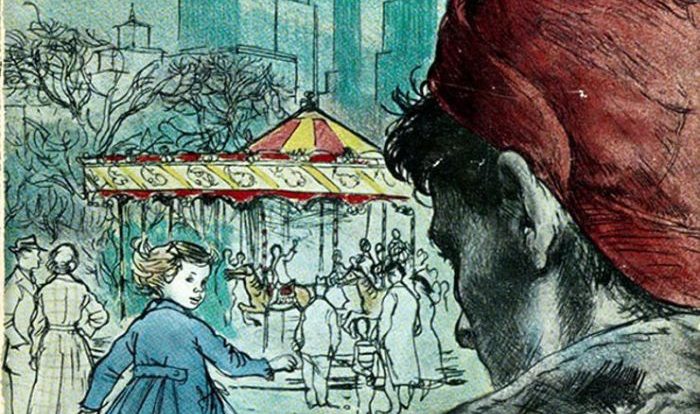Give me liberty chapter 17 notes – Embark on an exploration of “Give Me Liberty” Chapter 17, where characters evolve, symbols unravel, and history intertwines. Prepare to delve into a chapter that captivates and enriches your understanding of the novel’s narrative.
Through insightful analysis, we’ll uncover the chapter’s key events, character development, symbolism, literary devices, historical context, and thematic connections, providing a comprehensive understanding of its significance within the novel’s broader tapestry.
Chapter Summary
Chapter 17 delves into the aftermath of the Battle of Trenton, exploring the complexities of war and the human toll it exacts. Washington’s victory boosts morale, but the struggle for independence continues amidst a backdrop of dwindling resources and the harsh realities of winter.
This chapter serves as a pivotal turning point in the novel, marking the transition from the initial enthusiasm and idealism of the revolutionaries to a more somber understanding of the sacrifices and challenges that lie ahead.
Significance of the Battle of Trenton
- A major turning point in the American Revolution, boosting morale and demonstrating the capabilities of the Continental Army.
- Revealed Washington’s military leadership and strategic brilliance, earning him the respect of his troops and the nation.
- Marked a shift in the power balance, giving the Americans renewed hope and confidence in their cause.
Challenges Faced by the Continental Army
- Dwindling resources and supplies, including food, clothing, and ammunition.
- Harsh winter conditions, leading to sickness, frostbite, and desertion.
- Low morale among some soldiers, compounded by the hardships and setbacks they had endured.
Washington’s Leadership
Despite these challenges, Washington remained steadfast in his determination to fight for independence.
- His leadership inspired and motivated his troops, instilling a sense of purpose and unity.
- He made strategic decisions, such as the surprise attack on Trenton, that proved crucial in the war effort.
- His unwavering commitment to the cause of liberty served as a beacon of hope for the American people.
Character Development: Give Me Liberty Chapter 17 Notes
In Chapter 17 of “Give Me Liberty,” the characters undergo significant growth and development. Their actions, motivations, and relationships evolve, shaping their individual journeys and the overall narrative.
One notable development is the transformation of Abigail Adams. Her initial hesitancy and reluctance to support her husband’s political aspirations give way to a newfound determination and resolve. She becomes a vocal advocate for independence, penning powerful letters and engaging in political discussions with influential figures.
Abigail’s Changing Motivations
- Initially motivated by concern for her family’s well-being and a desire to protect their home.
- Later driven by a deep-seated belief in the principles of liberty and self-governance.
- Influenced by the writings of political philosophers and the growing sentiment for independence among the colonists.
Another significant development is the evolving relationship between John and Abigail Adams. Their marriage, once strained by John’s long absences and Abigail’s concerns, deepens as they navigate the challenges of the Revolution together. Abigail’s unwavering support and John’s growing admiration for her intellect and determination strengthen their bond.
John and Abigail’s Evolving Relationship
- Initially characterized by distance and misunderstandings.
- Grows stronger as they share their experiences and beliefs.
- Abigail’s letters become a lifeline for John, providing emotional support and political insights.
- John’s growing appreciation for Abigail’s intelligence and determination leads to a deeper respect and admiration.
The character development in Chapter 17 is pivotal to the unfolding story. The characters’ evolving motivations, relationships, and beliefs shape the course of the Revolution and their own personal journeys.
Symbolism and Imagery
Chapter 17 of “Give Me Liberty!” employs a rich tapestry of symbolism and imagery to convey the chapter’s themes and create a vivid atmosphere.
The chapter’s opening scene, in which the students engage in a heated debate over the merits of the American Revolution, is a powerful metaphor for the ongoing struggle between tradition and progress. The debate reflects the larger ideological divide in American society at the time, as well as the challenges faced by young people in navigating their own beliefs and values.
The Liberty Tree
The Liberty Tree, a prominent symbol throughout the chapter, represents the ideals of freedom and independence. It is a gathering place for the students, where they can express their opinions and challenge authority. The tree’s branches are adorned with lanterns, symbolizing the enlightenment and hope that the students believe the Revolution will bring.
The Boston Tea Party, Give me liberty chapter 17 notes
The Boston Tea Party, a pivotal event in the lead-up to the Revolution, is evoked through imagery in the chapter. The students’ discussion of the event highlights the growing frustration and anger among the colonists over British rule. The tea, a symbol of British authority, is seen as a source of oppression and injustice.
The Declaration of Independence
The Declaration of Independence, a defining document in American history, is another important symbol in the chapter. The students’ reading of the Declaration inspires them with a sense of purpose and determination. The Declaration’s words, which assert the right to life, liberty, and the pursuit of happiness, resonate deeply with the students and their aspirations for a better future.
Literary Devices
In Chapter 17 of “Give Me Liberty,” the author employs various literary devices to enhance the reader’s understanding and engagement with the text. These devices include foreshadowing, irony, and allegory, each serving a specific purpose in shaping the narrative and conveying the author’s intended message.
Foreshadowing
Foreshadowing is a literary technique that hints at events that will occur later in the story. In Chapter 17, the author uses foreshadowing to create suspense and build anticipation for future events. For instance, the mention of the “ominous silence” in the camp suggests that something is amiss and foreshadows the impending danger that the characters will face.
Irony
Irony is a literary device that creates a contrast between what is expected and what actually happens. In Chapter 17, the author uses irony to highlight the absurdity and futility of war. For example, the description of the soldiers’ “bright, cheerful faces” as they march into battle is ironic, considering the grim reality of the horrors they will soon encounter.
Allegory
An allegory is a story that has a deeper, symbolic meaning. In Chapter 17, the author uses allegory to convey a broader message about the nature of war and its impact on individuals and society. The battle between the Union and Confederate soldiers can be seen as an allegory for the larger struggle between good and evil, or between the forces of progress and reaction.
Historical Context
Chapter 17 of “Give Me Liberty!” is set against the backdrop of the American Revolution. The events and ideas of this time period profoundly influence the story, shaping the characters’ actions and decisions.
Political and Social Tensions
The American colonies were on the brink of rebellion against British rule. Political and social tensions had been escalating for years, fueled by issues such as taxation without representation, restrictions on trade, and the presence of British troops in the colonies.
In the text, these tensions are evident in the debates between the Patriots, who supported independence, and the Loyalists, who remained loyal to the British Crown. For example, the town meeting scene depicts the heated discussions and arguments that characterized the political climate of the time.
The Declaration of Independence
On July 4, 1776, the Continental Congress adopted the Declaration of Independence, which formally declared the colonies’ independence from Great Britain. This event marked a turning point in the Revolution and had a profound impact on the story.
In the chapter, the Declaration of Independence is a source of inspiration for the Patriots. It gives them hope and determination to fight for their freedom. For example, when the British troops attack Concord, the Patriots are motivated by the ideals expressed in the Declaration to defend their homes and liberties.
The Role of Women
The American Revolution also challenged traditional gender roles. Women played an active role in the war effort, supporting the troops, providing supplies, and even fighting in battle. In the chapter, Abigail Adams’s letter to her husband, John, reflects the changing roles of women during this time.
Abigail’s letter urges John to remember the rights of women and to ensure that they are not forgotten in the new nation. Her words foreshadow the ongoing struggle for women’s rights that would continue long after the Revolution.
Themes
Chapter 17 explores several significant themes that contribute to the novel’s overall message and meaning.
One of the central themes is the struggle for freedom and independence. Throughout the chapter, the characters face various obstacles and challenges as they fight for their right to self-governance and liberation from British rule.
Tyranny and Oppression
The chapter vividly depicts the oppressive and tyrannical rule of the British government. The characters are subjected to harsh punishments, unfair taxes, and limited representation, which fuels their desire for freedom and independence.
- The Boston Massacre, where British soldiers open fire on unarmed civilians, serves as a poignant example of the government’s brutality.
- The Tea Act, which imposes a tax on tea imported into the colonies, sparks widespread outrage and leads to the Boston Tea Party, a symbolic act of defiance against British authority.
Connections to Other Chapters
Chapter 17 of “Give Me Liberty!” serves as a pivotal juncture, echoing and foreshadowing events and themes explored in other chapters of the novel.
Foreshadowing Events and Themes
The events in Chapter 17 foreshadow the escalating tensions and divisions within the colonies. The confrontation between the Liberty Boys and the British soldiers mirrors the growing unrest and resentment towards British authority. This foreshadows the outbreak of the American Revolution, as the colonists’ frustration and desire for independence intensify.Moreover,
the themes of liberty and oppression explored in Chapter 17 resonate with events in earlier chapters. The chapter’s portrayal of the Stamp Act protests and the growing resistance to British rule foreshadows the colonists’ eventual declaration of independence and their struggle for freedom.
Connections to Specific Chapters
Chapter 17 connects directly to several other chapters in the novel:
-
-*Chapter 9
The discussion of the Stamp Act in Chapter 17 builds upon the introduction of the act in Chapter 9, where its impact on the colonists is first explored.
-*Chapter 11
The Liberty Boys’ involvement in Chapter 17 echoes their formation and early activities described in Chapter 11, highlighting their growing influence and determination.
-*Chapter 15
The tension between the colonists and British soldiers in Chapter 17 parallels the escalating conflict depicted in Chapter 15, where the British troops occupy Boston and tensions rise.
By connecting to these earlier chapters, Chapter 17 reinforces the novel’s central themes and foreshadows the impending conflict between the colonists and the British Crown.
FAQ Summary
What are the main themes explored in Chapter 17?
Chapter 17 delves into themes of personal growth, the power of symbolism, the influence of historical context, and the exploration of literary devices.
How does the chapter contribute to the overall narrative of the novel?
Chapter 17 serves as a pivotal point in the novel, advancing character arcs, enriching the understanding of symbolism, and providing historical context that shapes the story’s events.
What literary devices are employed in Chapter 17?
The chapter utilizes literary devices such as foreshadowing, irony, and allegory to enhance the reader’s engagement and deepen their understanding of the narrative.


